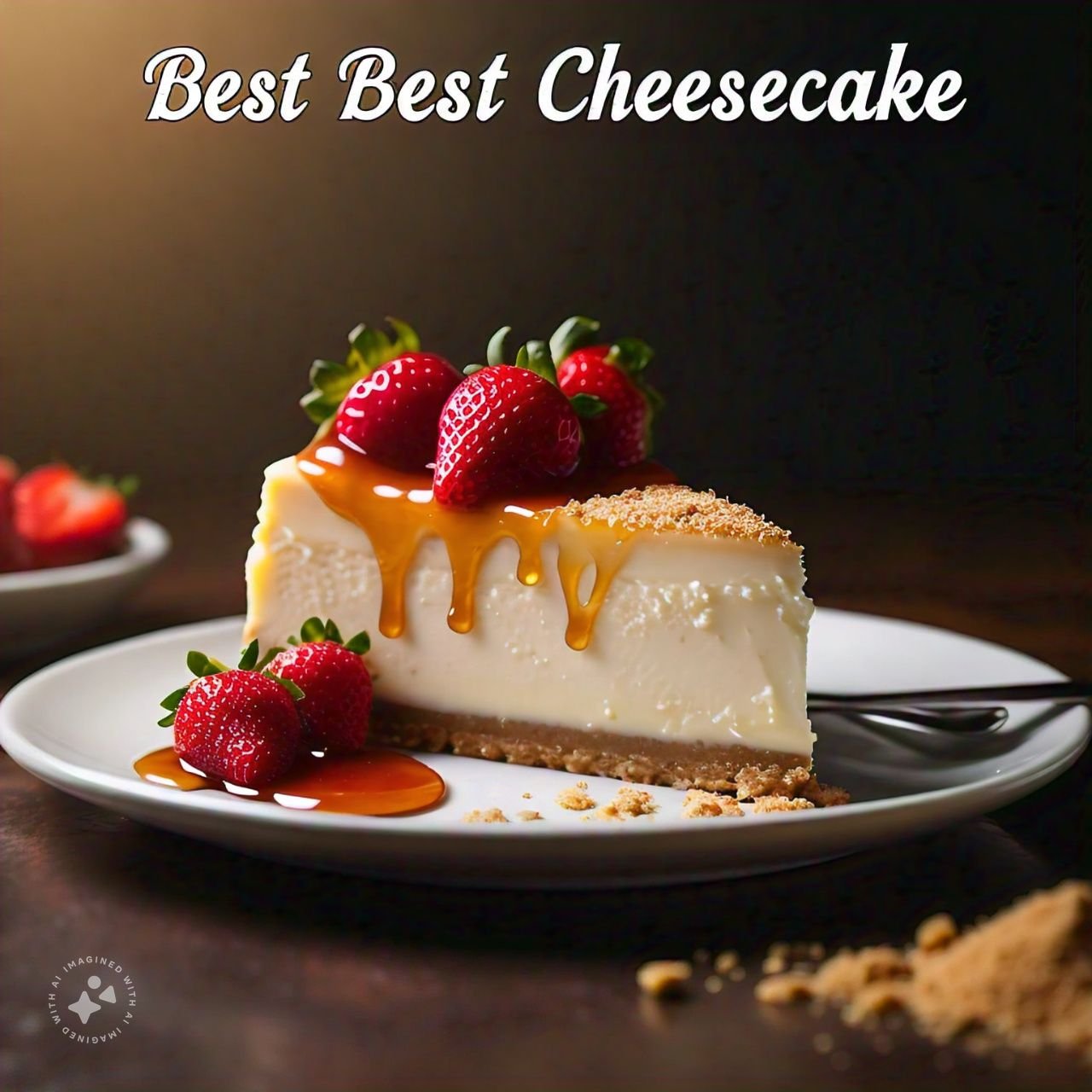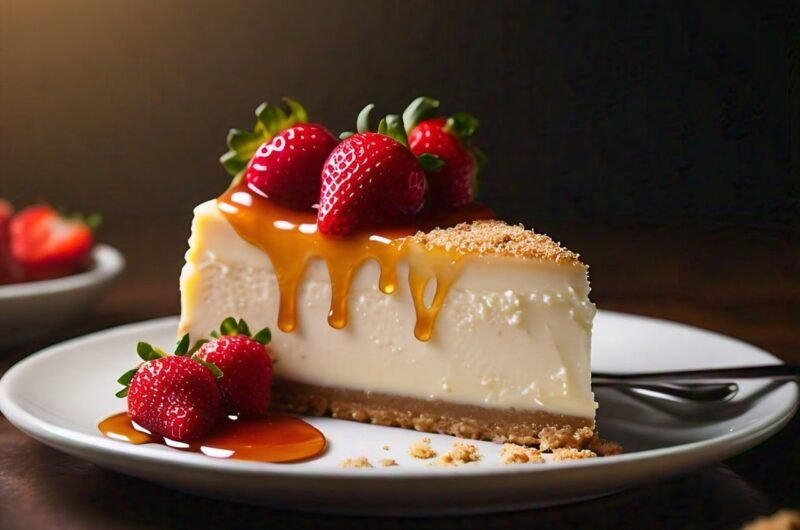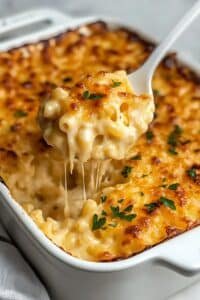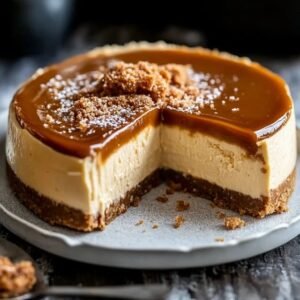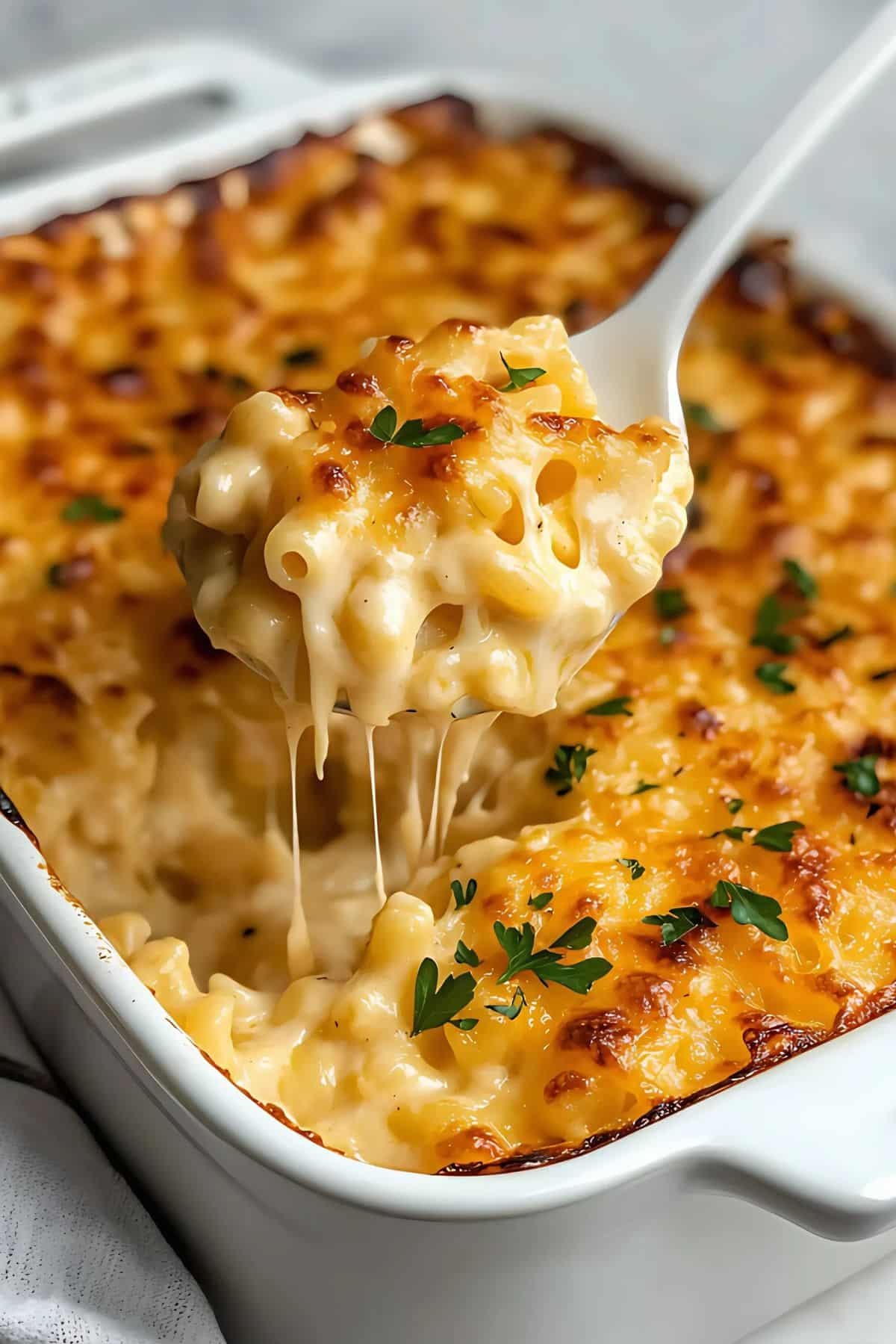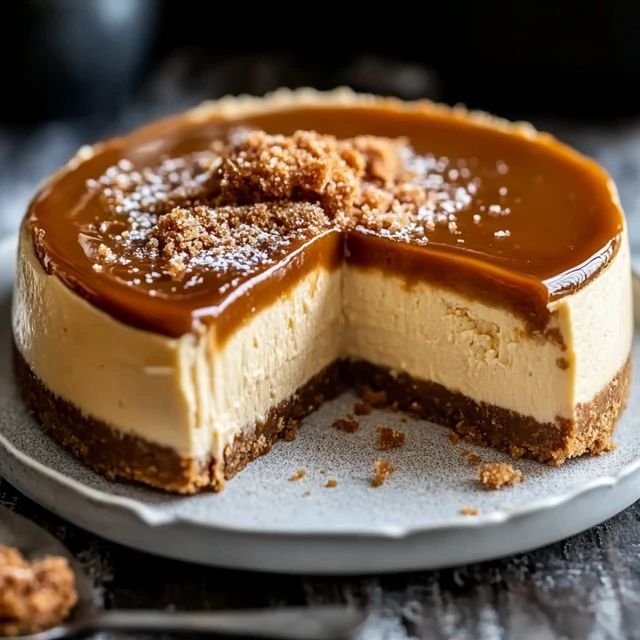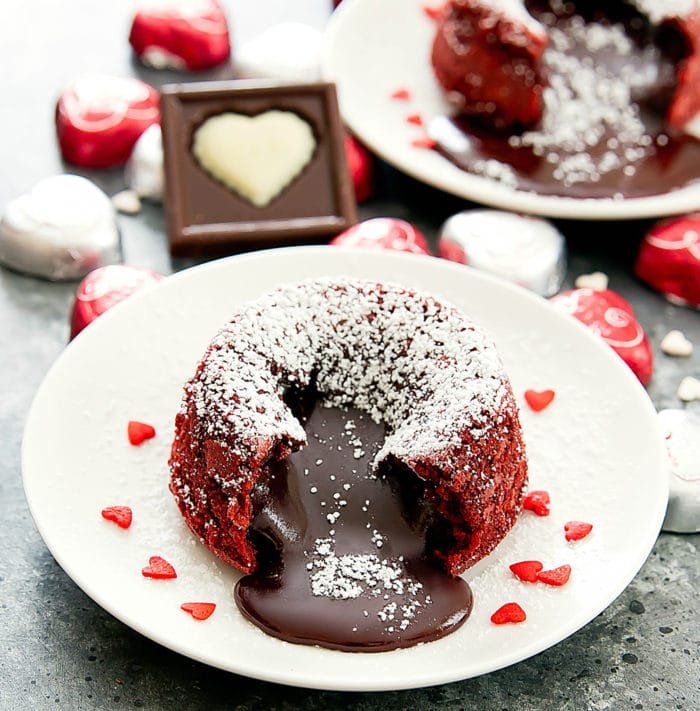Cheesecake is a classic dessert with a rich, creamy texture and a wonderfully crunchy crust, making it a favorite among many. Creating the best cheesecake demands meticulous attention to detail and a thorough understanding of the ingredients and techniques. Here’s a complete guide to making the tastiest cheesecake.
Table of Contents
ToggleThis Best Cheesecake recipe is worth trying
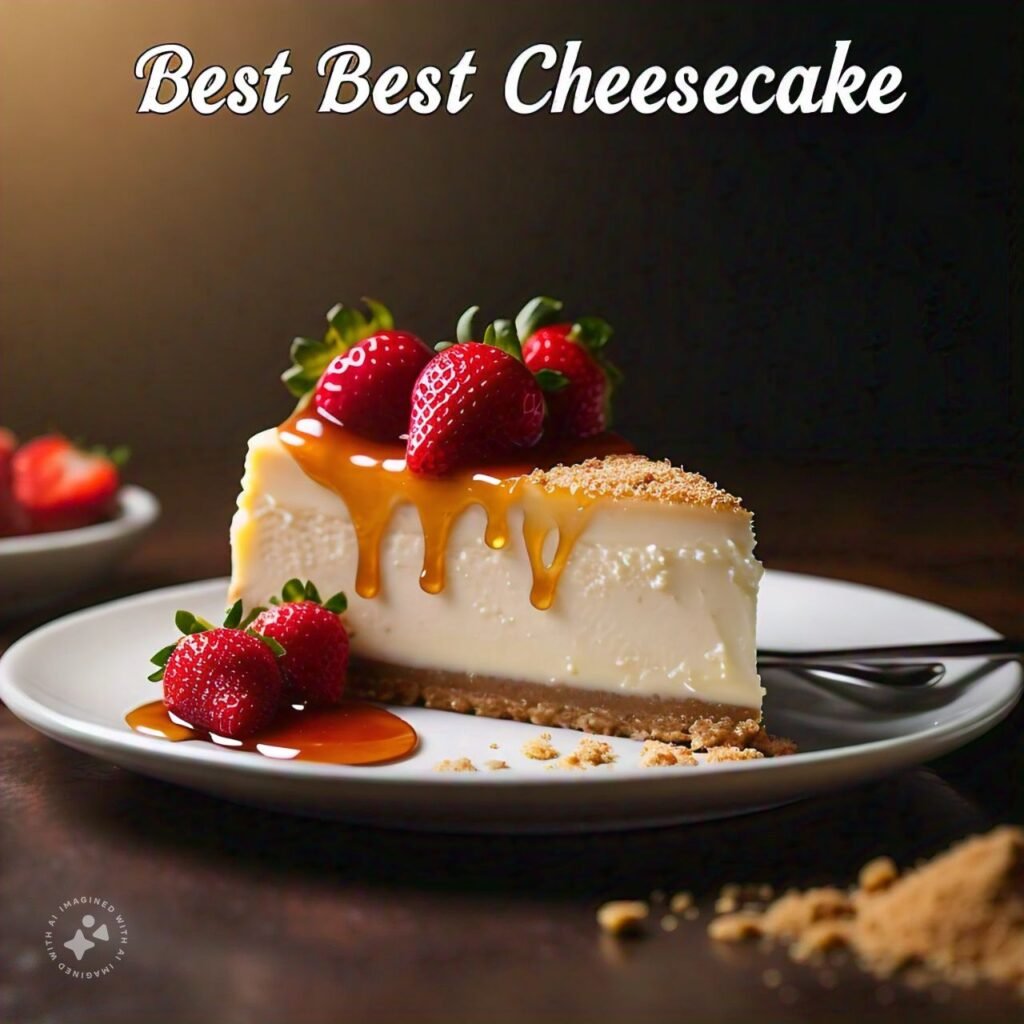
Incredibly creamy and rich texture; the best cheesecake ever had!
- Perfect balance of sweetness and tanginess, with a buttery crust.
- The recipe was simple to follow and turned out flawless on the first try.
- I loved the versatility with toppings; I made it with fresh berries, and it was a hit!
- No cracks and beautiful presentation; ideal for special occasions.
- Better than any store-bought cheesecake, it tastes homemade and fresh.
Home-made vs store-bought cheesecake

- You can customise the flavours and ingredients when making a homemade cheesecake.
- You control the quality and freshness of the components in handmade cheesecake.
- Homemade versions frequently lack the preservatives and artificial ingredients seen in store-bought products.
- Store-bought cheesecake is convenient and saves time.
- To meet specific dietary needs, you can customise homemade cheesecake, like gluten-free or vegan.
- Store-bought cheesecake provides uniformity in both taste and texture.
Ingredients for the best cheesecake
For Crust
1/2 cup of Graham cracker crumbs
1/4 cup granular sugar
Melt 1/2 cup of unsalted butter.
For Filling
- 4 packets (8 ounces) of softened cream cheese
- 1 cup of granulated sugar
- One teaspoon of vanilla extract
- 4 big eggs
- Sour cream (2/3 cup)
- 2/3 cup thick cream
Optional topping
One cup of sour cream
1/4 cup of powdered sugar
One teaspoon of vanilla extract
Cheesecakes have health benefits.
- Cheesecake with cream cheese is high in calcium and essential for strong bones and teeth.
- Protein in cheesecake can aid in muscle repair and growth.
- Cheesecake can contain healthy fats essential for brain function and vitality.
- Eggs and cream can provide critical vitamins and minerals, such as vitamin A and phosphorous.
- Cheesecake can provide antioxidants and vitamins when cooked with fresh fruit toppings.
Nutritional facts
- Calories 400
- Total fat: 28g
- Cholesterol 135mg
- Sodium 300mg
- Carbohydrate 32g
- Protein 7g
The best cheesecake pan to use
- Using springform pans makes it easy to remove the cheesecake without damaging the sides.
- A nonstick surface guarantees that the cheesecake slides gently out of the pan.
- Heavy-duty pans ensure uniform heat distribution, lowering the chance of cracking.
- Leak-proof pans keep water from a bath from seeping in.
- A 9-inch pan is the most popular and adaptable size for most cheesecake recipes.
How to make the best cheesecake?
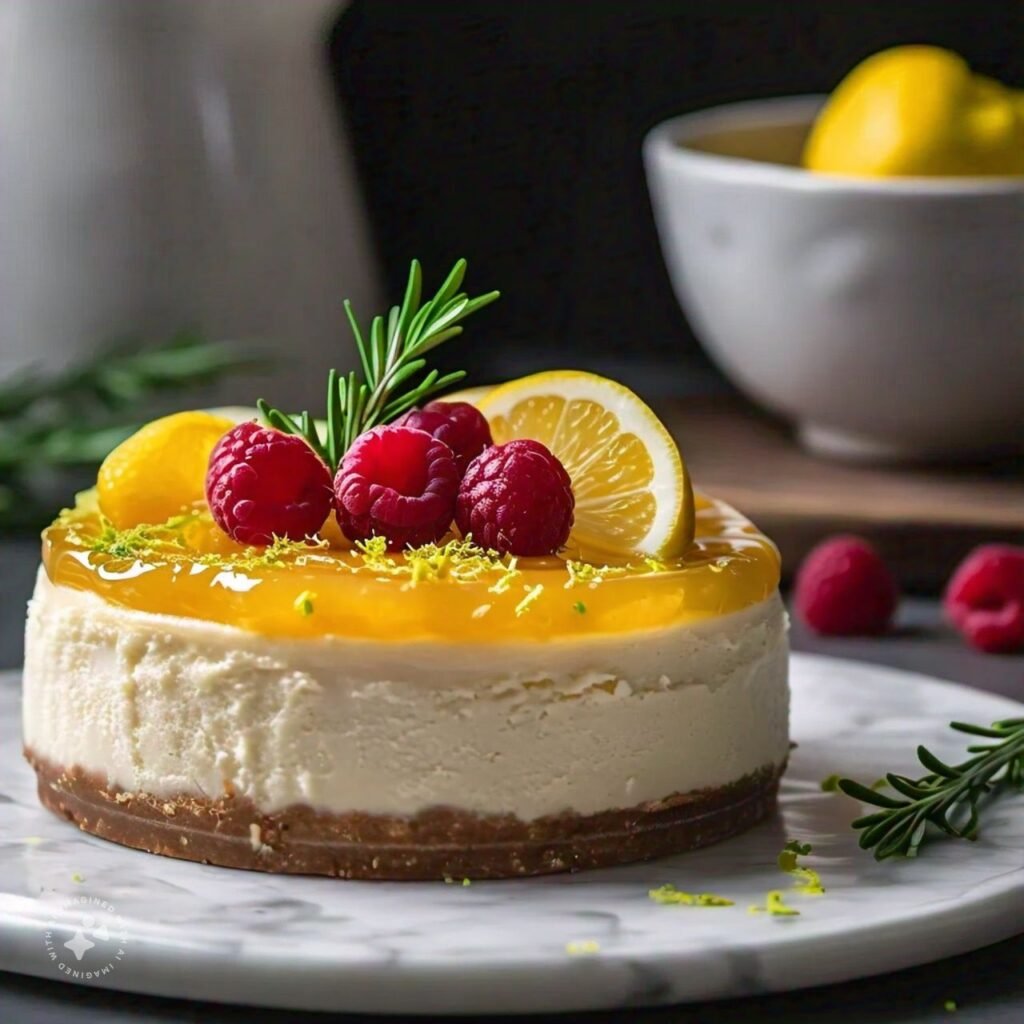
- Preparing the crust
Preheat the oven to 350°F (175°C).
Combine 1 1/2 cups of Graham cracker crumbs and 1/4 cup granulated sugar in a medium mixing bowl.
Add 1/2 cup of melted unsalted butter and whisk to coat the crumbs evenly.
Press the mixture firmly into the bottom of a 9-inch springform pan, forming an equal layer.
After baking for 10 minutes, let the crust cool while you make the filling.
- Making the filling
Combine four (8-ounce) packages of softened cream cheese in a large mixing bowl and beat until smooth.
Gradually add 1 cup of granulated sugar and beat until smooth.
Add one teaspoon of vanilla extract and stir thoroughly.
Add the eggs one at a time, beating thoroughly after each addition.
Blend in 2/3 cup sour cream and 2/3 cup heavy cream until the mixture is creamy and well blended.
- Bake the cheesecake
Spread the cream cheese filling over the prepared crust in the springform pan.
Place the springform pan in a larger baking pan and fill the larger pan with hot water until it reaches halfway up the sides of the springform pan.
Bake in a preheated oven for 55 to 70 minutes or until the middle is nearly set but still jiggly.
Turn off the oven and leave the cheesecake in for 1 hour, leaving the door slightly open.
- Cooling and refrigeration
Remove the cheesecake from the oven and carefully remove it from the pan’s sides with a knife.
Allow the cheesecake to cool to room temperature before refrigerating for at least 4 hours, ideally overnight.
- Add the topping (optional)
Mix 1 cup sour cream, 1/4 cup powdered sugar, and one teaspoon of vanilla essence in a separate dish.
Spread the mixture evenly across the cold cheesecake.
Refrigerate the cheesecake for another 30 minutes before serving.
Tips for Making the Perfect Cheesecake
- Utilise room-temperature ingredients
To produce a smooth and creamy filling, ensure all your ingredients, notably the cream cheese, eggs, and creams, are at room temperature before mixing.
- Prevent Overmixing
While it is crucial to beat the cream cheese until smooth, overmixing might cause cracks in your cheesecake. Mix until all of the ingredients are well blended.
- The water bath method
Baking the cheesecake in a water bath helps to keep the oven moist, preventing cracks and guaranteeing even cooking. Wrap the bottom of the springform pan with aluminium foil to prevent water from leaking.
- Gradual cooling
Slowly cooling the cheesecake in the oven and then at room temperature helps prevent cracks and keeps the texture smooth and dense.
- Patience is crucial
Refrigerating the cheesecake for many hours or overnight is essential for achieving the desired texture and flavour. Cutting into it too quickly can result in a watery, bland dessert.
Variations for the Best Cheesecake
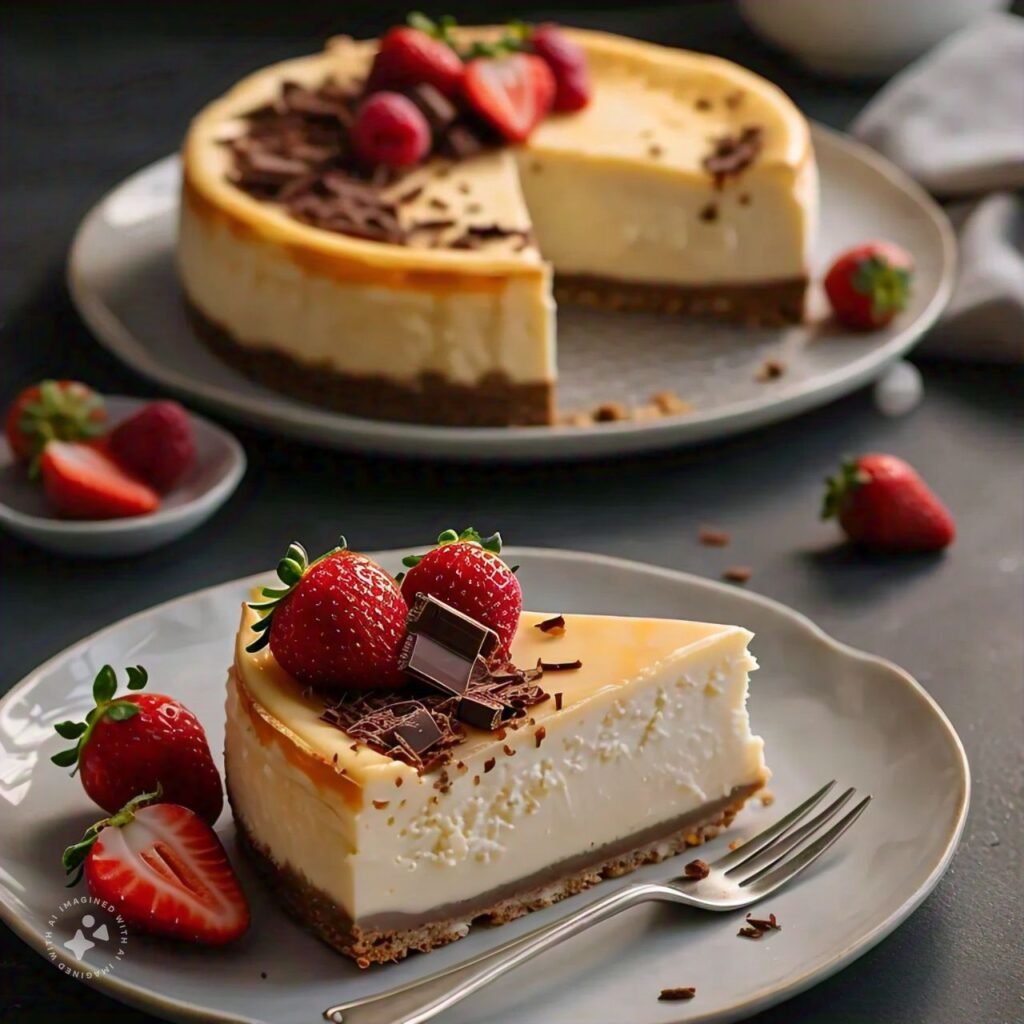
- Chocolate Cheesecake
To give the cream cheese mixture a deep, chocolatey twist, add 1 cup of melted dark chocolate before adding the eggs.
- Fruit-topped Cheesecake
You can top your cheesecake with fresh fruits like strawberries, blueberries, and raspberries. For extra taste, mix in a fruit compote or preserve.
- Lemon Cheesecake
Mix two teaspoons of lemon zest and 1/4 cup of lemon juice into the filling for a zest, refreshing cheesecake.
- Cheesecake made with pumpkin.
For a festive treat, combine one cup of pumpkin puree, one teaspoon of cinnamon, and 1/2 teaspoon each of nutmeg and ginger with the cream cheese.
- Caramel pecan cheesecake
Drizzle a layer of caramel sauce over the cheesecake and top with chopped pecans for a luxurious touch.
Topping suggestions for the Best Cheesecake
- Fresh berries, such as strawberries, blueberries, or raspberries, provide a pop of colour and flavour.
- A drizzle of caramel or chocolate sauce adds to the richness of the cheesecake.
- Sliced fruits like peaches, kiwi, and mango provide a refreshing, delicious contrast.
- Crushed nuts such as almonds, pecans, and walnuts provide a crispy texture.
- Whipped cream adds a light and airy texture to the rich cheesecake.
- A powdered sugar or cocoa powder coating provides a simple yet lovely touch.
For vegan cheesecake
- Plant-based components, such as cashews or tofu, are used instead of dairy.
- It is suitable for people who are lactose intolerant or have dairy allergies.
- In comparison to regular cheesecake, it is often lower in saturated fat.
- A healthy option is to use natural sweeteners and whole-food ingredients.
- It provides a delectable dessert option for both vegans and non-vegans.
For gluten-free cheesecake
- Crust alternatives include almond flour and gluten-free graham crackers.
- It is safe for people who have celiac disease or gluten intolerance.
- It maintains the rich, creamy texture of classic cheesecake.
- A wider audience can relish it, particularly those adhering to gluten-free diets.
- It often employs superior, whole-food components to craft a nourishing dessert option.
Serving and storing cheesecake
Cheesecake is best served chilled. Slice it with a clean knife dipped in hot water to ensure a clean cut. You can refrigerate and cover any leftovers for up to 5 days. To prolong its shelf life, you can freeze it. Wrap individual slices in plastic wrap and store them in a freezer-safe container. Thaw in the fridge before serving.
How to Avoid Cheesecake Cracks?
- To create a smooth batter, ensure all ingredients are at room temperature.
- To avoid adding too much air, carefully mix the batter.
- You can use a water bath to maintain a consistent baking temperature and avoid dryness.
- Avoid overbaking; when finished, the centre should be slightly jiggly.
- While the door is open, allow the cheesecake to cool gradually in the oven.
- Run a knife along the edges immediately after baking to remove the cheesecake from the pan.
Related Recipes:
FAQS
What is the best type of cream cheese for making cheesecake?
Full-fat cream cheese gives the best results. It has the richest and creamiest consistency. Ensure the cream cheese is at room temperature before mixing to avoid lumps.
Can cheesecake be frozen?
Yes, cheesecake freezes well. Wrap individual slices in plastic wrap before storing them in a freezer-safe container. Refrigerate overnight before serving.
Can I use low-fat cream cheese to make a lighter cheesecake?
You can use low-fat cream cheese, but the texture and richness will alter significantly. Full-fat cream cheese is preferred for the traditional creamy texture. However, low-fat alternatives can create a lighter dessert.
What is a water bath, and why is it necessary to make cheesecake?
A water bath entails placing the springform pan containing the cheesecake batter in a bigger baking pan filled with hot water. This method helps maintain the cheesecake’s temperature, preventing cracks and guaranteeing even baking.
How can I tell when my cheesecake has finished baking?
The cheesecake is ready when the borders are firm, but the middle still jiggles slightly. It will continue to solidify as it cools. Overbaking can cause dryness and surface cracks.
Conclusion
Making the best cheesecake is a skill that demands both accuracy and patience. By following these precise methods and ideas, you can make a cheesecake that is visually stunning and seductively delicious. Whether you prefer it basic or with various toppings and tastes, this comprehensive guide will help you consistently achieve cheesecake perfection.
The Best Cheesecake Recipes
Course: DessertCuisine: American12
servings25
minutes1
hour450
kcal4
minutes1
hour29
minutesCheesecake is a classic American dessert known for its rich, creamy texture and deliciously sweet flavor. This recipe features a perfect balance of cream cheese, sugar, and eggs, nestled on a buttery graham cracker crust. Whether you’re preparing for a special occasion or simply indulging in a sweet treat, this cheesecake is sure to impress.
Ingredients
For the Crust:
1 1/2 cups graham cracker crumbs
1/4 cup granulated sugar
1/2 cup unsalted butter, melted
For the Filling:
4 (8-ounce) packages cream cheese, softened
1 cup granulated sugar
4 large eggs
1 teaspoon vanilla extract
1 cup sour cream
1 cup heavy cream
For the Topping (Optional):
Fresh fruit or fruit compote
Whipped cream
Directions
- Prepare the Crust:
- Preheat your oven to 325°F (163°C).
- In a medium bowl, combine graham cracker crumbs, sugar, and melted butter. Mix until well combined.
- Press the mixture into the bottom of a 9-inch springform pan, creating an even layer. Bake for 10 minutes. Remove from the oven and let cool.
- Prepare the Filling:
- In a large bowl, beat the softened cream cheese until smooth.
- Gradually add sugar and continue beating until creamy.
- Add eggs one at a time, beating well after each addition.
- Mix in vanilla extract, sour cream, and heavy cream until fully combined.
- Pour the filling over the cooled crust in the springform pan.
- Bake the Cheesecake:
- Bake in the preheated oven for 1 hour or until the center is set but still slightly jiggly.
- Turn off the oven and crack the oven door slightly. Let the cheesecake cool in the oven for 1 hour.
- Remove from the oven and refrigerate for at least 4 hours or overnight to fully set.
- Serve:
- Release the cheesecake from the springform pan.
- Top with fresh fruit, fruit compote, or whipped cream if desired.
- Slice and serve chilled.
Recipe Video
Notes
- Overmixing the Filling: This can introduce excess air and cause cracks in the cheesecake.
Skipping the Cooling Step: Allow the cheesecake to cool in the oven with the door ajar to prevent sudden temperature changes that can cause cracks.
Using Cold Cream Cheese: Ensure the cream cheese is at room temperature to achieve a smooth filling.

